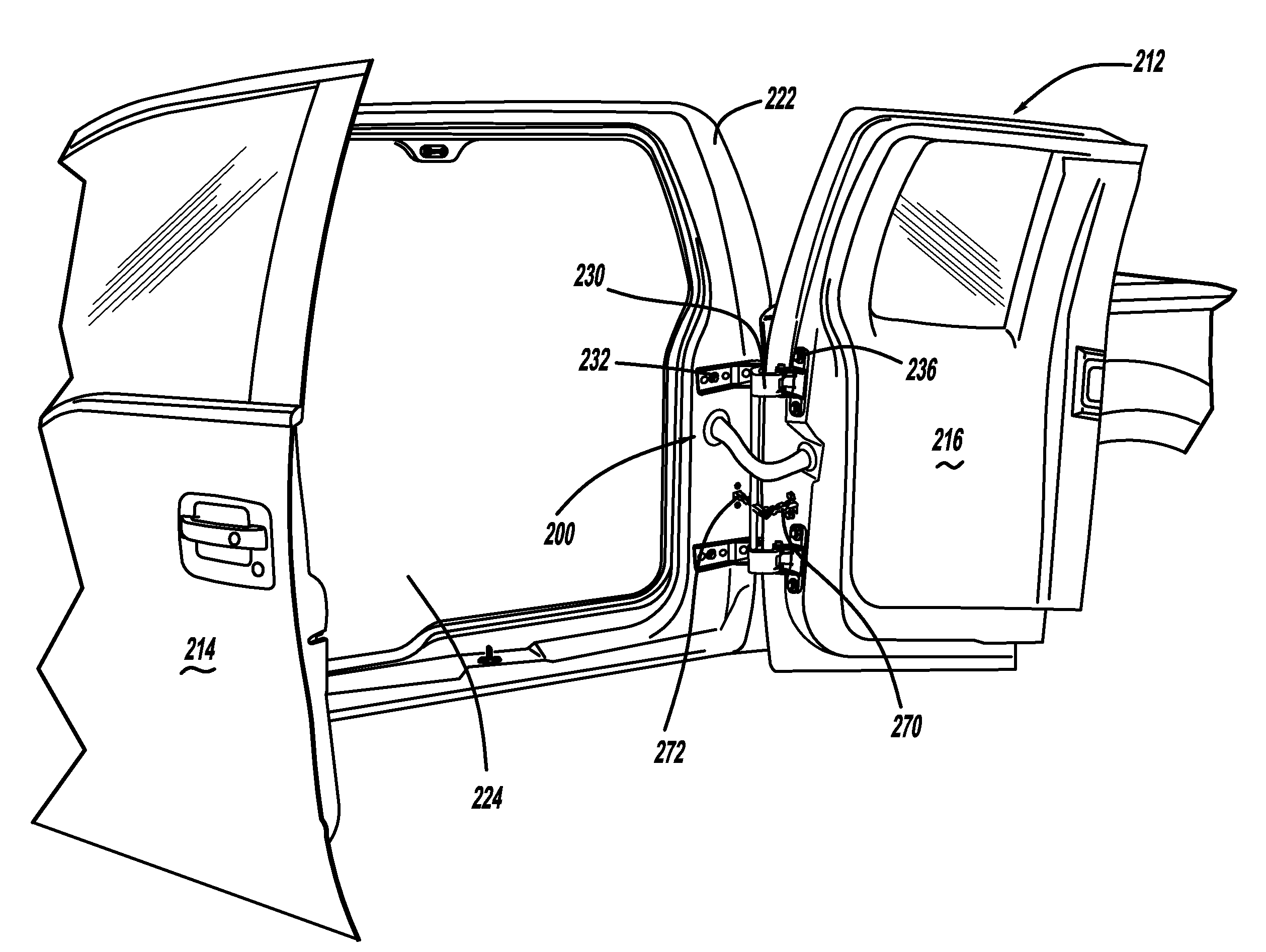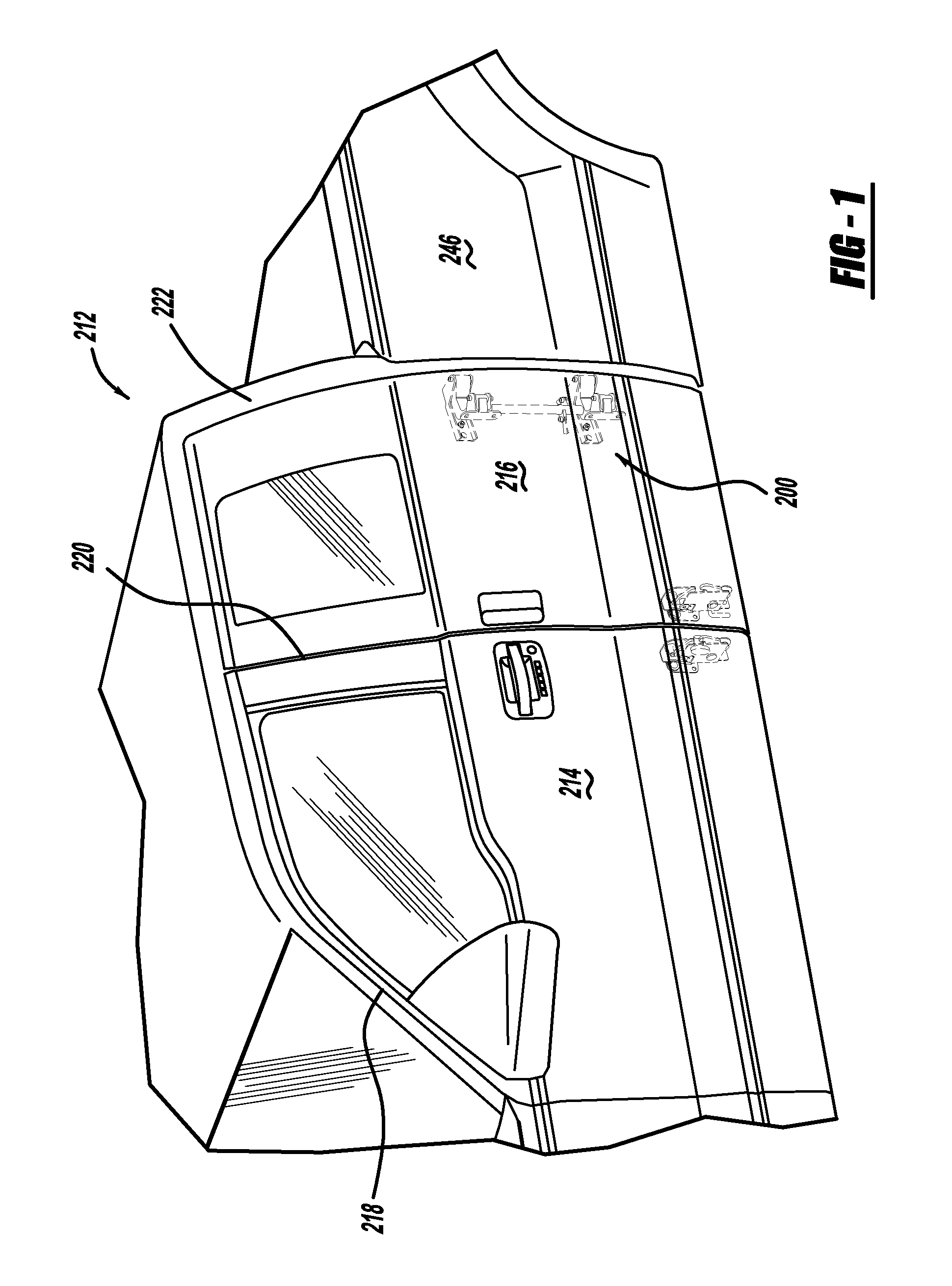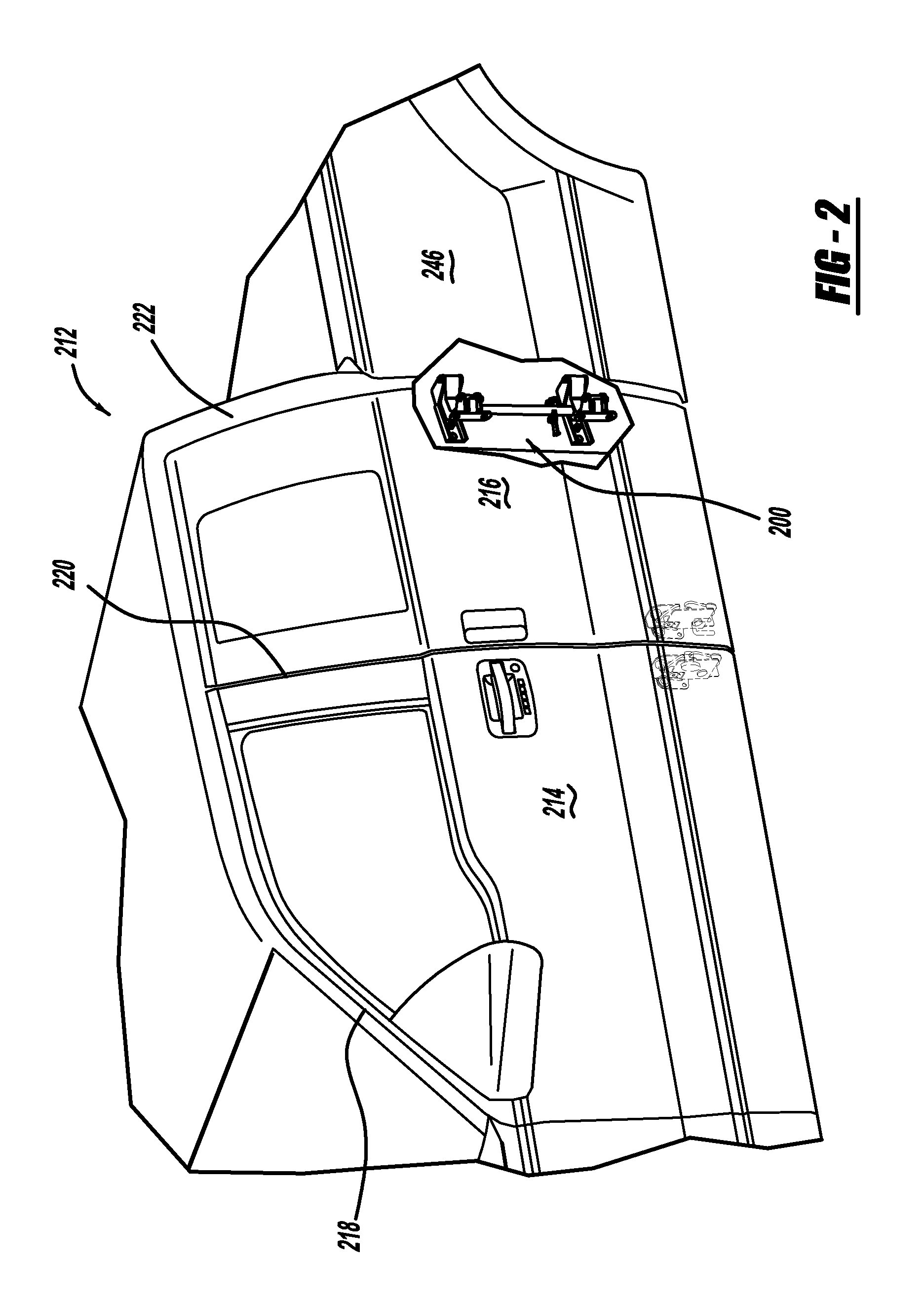Vehicle unsequenced rear door articulating mechanism
a rear door and mechanism technology, applied in the direction of roofs, doors, wing accessories, etc., can solve the problems of affecting the operation of the vehicle, etc., and achieving the effect of avoiding failure, avoiding assembly, and avoiding articulation
- Summary
- Abstract
- Description
- Claims
- Application Information
AI Technical Summary
Benefits of technology
Problems solved by technology
Method used
Image
Examples
Embodiment Construction
[0035]Referring now to the drawings wherein like reference numerals designate corresponding parts throughout the several views, FIGS. 1-12 illustrate a mechanism for vehicle rear door articulation according to the present invention, generally designated “rear door articulating mechanism 200.”
[0036]Referring to FIGS. 1-3, rear door articulating mechanism 200 may generally be mounted onto a vehicle 212 including front and rear doors 214, 216. In the exemplary embodiment illustrated, vehicle 212 may be a pickup truck including A, B and C pillars 218, 220, 222. As shown in FIGS. 4 and 5, and described in greater detail below, in order to facilitate ingress and egress into and from compartment 224 of vehicle 212, rear door articulating mechanism 200 may allow for complete opening of rear door 216 at up to 180° (or less based on the design of the components as would be readily evident to those skilled in the art) relative to the rear door initial closed position, and subsequent closing of...
PUM
 Login to View More
Login to View More Abstract
Description
Claims
Application Information
 Login to View More
Login to View More - R&D
- Intellectual Property
- Life Sciences
- Materials
- Tech Scout
- Unparalleled Data Quality
- Higher Quality Content
- 60% Fewer Hallucinations
Browse by: Latest US Patents, China's latest patents, Technical Efficacy Thesaurus, Application Domain, Technology Topic, Popular Technical Reports.
© 2025 PatSnap. All rights reserved.Legal|Privacy policy|Modern Slavery Act Transparency Statement|Sitemap|About US| Contact US: help@patsnap.com



